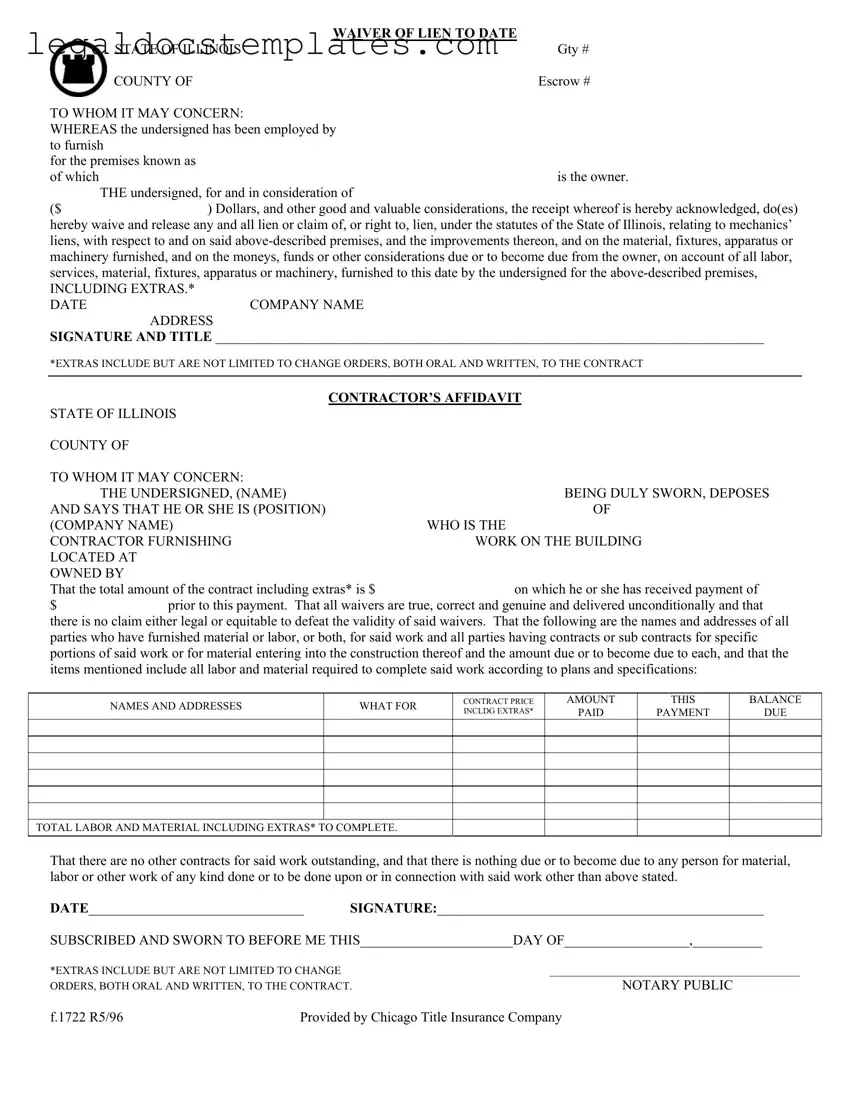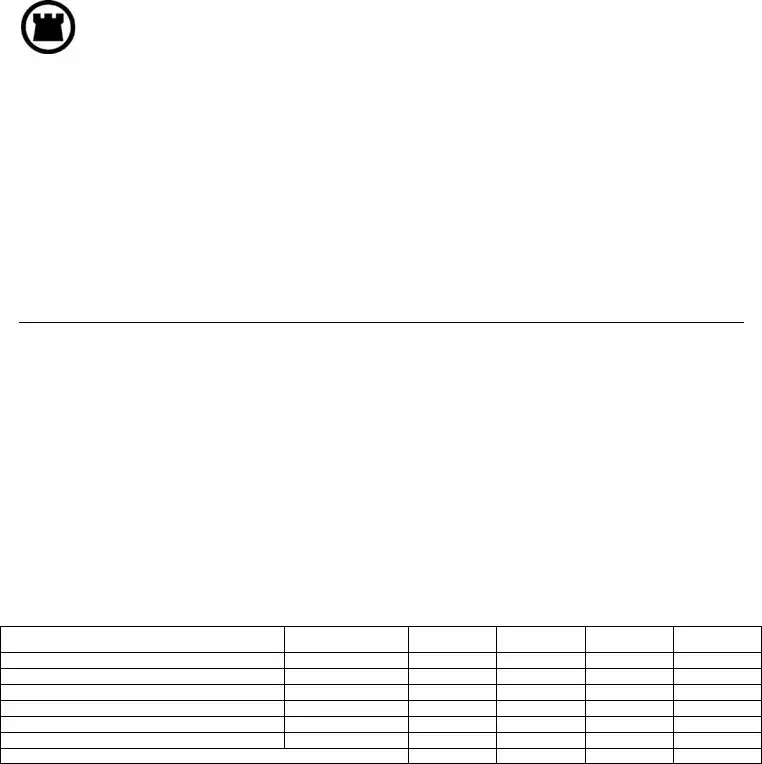The Partial Waiver of Lien closely resembles the Chicago Title Waiver Format form, primarily because both serve to relinquish rights or claims over a property up to a certain date or payment amount. They ensure that contractors, subcontractors, or suppliers formally renounce any legal claims for payment they might have against a project once they receive partial payment, acknowledging that their ability to claim a lien for that portion of work or materials supplied is waived.
Similarly, the Final Waiver of Lien is akin to the Chicago Title Waiver Format in its fundamental purpose—to waive rights to a lien. However, the distinction lies in its application at the conclusion of a project, signifying that the signing party has received full payment and waives any future claims against the property. This document is crucial in ensuring all financial obligations are met, and no further liens will be placed on the property post-completion.
The Contractor’s Affidavit shares similarities with the Chicago Title Waiver Format, particularly in documenting that payments have been received and specifying the completion status of work. Both documents play a vital role in the construction payment process, offering reassurance to property owners by verifying the legitimacy of claims and ensuring that all parties involved in the construction have been or will be paid, thus preventing future legal disputes over payment.
The Release of Lien document, much like the Chicago Title Waiver Format, acts to officially release a property from any claims, encumbrances, or potential legal liabilities associated with construction projects. Upon receiving full payment, this document is filed to clear the property's title, ensuring that no lingering claims can affect the ownership or sale of the property.
The Mechanic’s Lien itself, while a document asserting a right rather than waiving it, is intrinsically connected to the Chicago Title Waiver Format form. Mechanic's Liens are filed by contractors, subcontractors, or suppliers as a legal claim against a property when payment for services rendered is not received. The waiver format serves as a preventive or remedial document, ensuring that such claims are nullified upon settlement, highlighting their interdependence in managing payment disputes in construction.
A Notice of Commencement is another document related to the Chicago Title Waiver Format, though not by direct function, rather by its role in the sequence of a construction project's legal paperwork. This document signals the start of a project, potentially affecting lien rights and timelines. Understanding the start date is crucial for the timing and validity of lien waivers, making both documents essential to the construction process's legal framework.
Conditional Waiver and Release upon Progress Payment documents bear similarity to the Chicago Title Waiver Format by acknowledging the receipt of a payment through a conditional approach. These waivers provide that a lien will not be claimed as long as conditions, such as receiving a payment, are met within a certain time frame. They protect both the payer's interests by preventing premature lien claims and the payee's rights by ensuring payment is received for work completed.
The Unconditional Waiver and Release upon Final Payment, like the Chicago Title Waiver Format, finalizes the financial transaction between contractors and property owners. It serves a definitive end to any obligations or claims once a project is fully paid for, guaranteeing a clear title. This document is crucial for both parties as it conclusively resolves all lien rights, ensuring the property is free from any future claims arising from the construction project.

